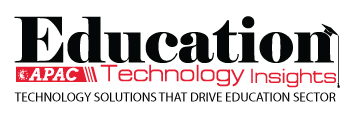THANK YOU FOR SUBSCRIBING
Be first to read the latest tech news, Industry Leader's Insights, and CIO interviews of medium and large enterprises exclusively from Education Technology Insights
Bridging Gaps and Taking Leaps in Stem Education Landscape
Naihma Mae E. Casicas, Senior High School Teacher at Liceo de Cagayan University
 Naihma Mae E. Casicas, Senior High School Teacher at Liceo de Cagayan University
Naihma Mae E. Casicas, Senior High School Teacher at Liceo de Cagayan UniversityNaihma Mae E. Casicas is the Academic Chairperson of the Senior High School Department at Liceo de Cagayan University. With a strong background in science education, she previously served as the STEM Chairperson for the same department, where she was instrumental in promoting innovative learning approaches in the fields of science, technology, engineering, and mathematics. Before her role in education, Naihma was a dedicated registered nurse with the Philippine Department of Health, where she gained valuable experience in healthcare. Currently, she combines her passion for teaching and her extensive background in healthcare to inspire and educate the next generation of students in the sciences.
Through this article, Naihma Mae E. Casicas highlights the ongoing challenges faced by the education system, including a shortage of qualified STEM professionals. Despite these hurdles, schools have made significant strides by innovating their curricula to better prepare students for higher education and future careers. Casicas emphasizes the importance of early exposure to healthcare settings to cultivate future professionals in medicine and allied fields.
"STEM education remains steadfast in its mission to improve the future of the Philippines, continuously making leaps and bridging gaps for the benefit of our students and society"
Although years have passed, the effects of the COVID-19 outbreak are still evident in how we approach and design our curricula, with the mix of faceto-face and online classes being implemented even in the K-12 curriculum. Even before the pandemic hit the country, it was already evident, albeit neglected, that its STEM education had not been innovative consistently. It cannot be denied that this catastrophe has significantly brought to light the shortage of qualified professionals in the Philippines, especially those who are under the STEM umbrella. As the country grapples with the change of landscape in the education sector, individual schools in the private sector have made leaps to bridge the gap between the country’s insufficient resources, outdated structures and the growing need for technologically adept graduates.
Schools at the forefront of Senior High School education have seen an increasing number of enrollees registering under the STEM strand. With this, they have taken various leaps by addressing the nation's needs presently. As preparation for college and beyond, the SHS curriculum has emphasized the importance of a robust STEM education—the need for constant innovation and elevation of the learning experience for its STEM students. Several schools have incorporated additional subjects into their STEM curriculum. For instance, the addition of robotics, which has spread across the SHS years, has garnered favorable responses from the students, citing new knowledge and experiences as the top motivators for taking the elective subject. This has ignited student interest in further studies of mechatronics and autotronics, which is further evident in the rising enrollment numbers for these courses at specific colleges and universities.
As ubiquitous as it is, research is still trending in the Philippine education landscape. After years of implementation, the SHS curriculum is still in contention with the details. However complicated, numerous SHS schools have established a sustainable research practice and culture among the students. Most schools would encourage them to rediscover readily available materials in their locality, conduct research on their chemical and physical properties and explore ways to utilize these materials to address current predicaments and possibly solve them in the long run. This aims to increase vigor among students, consequently developing STEM-centered qualities with critical and analytical thinking, to name a few. This practice would be hitting two birds with one stone: the school gets to develop highly competent STEM students ready for higher education and eventual employment and develop a startup to potential solutions for present and forecasted problems of the nation.
Healthcare is one of the nation’s sectors that would benefit from strengthening the STEM education program since there is a significant lack of professionals in medicine, nursing, medical technology and physical therapy. Several SHS schools have opted to expose their students early into the clinical and community setting, where professionals in these areas shadow them. Their early exposure to the world of the profession they are interested in would most likely ensure that they retain that interest and will choose to pursue that course in university. Hopefully, through this, more healthcare professionals will be in the workforce soon, thus securing the nation's future in the healthcare sector. These new leaps have just been implemented, and no longterm evaluation has yet been conducted. However, the nation is hopeful for the benefits it will yield in the coming years. With this, STEM education will remain steadfast in its mission to better the future of the Philippines and its paramount goal is its students. Until then, it will continue to make leaps and bridge gaps for the benefit of the nation’s people.
Read Also
Empowering Educators through Purposeful, Connected and Transformative Learning
Empowering Students to Lead: A New Vision for Civic Learning
The Director's Playbook: Strategic Digital Transformation in Rual Hyper-Growth Districts
The Art and Architecture of Student Support
From At-Risk to At-Promise: The Language Revolution Higher Education Needs
Teaching Tomorrow: How Western Governors University Is Redefining Teacher Preparation

I agree We use cookies on this website to enhance your user experience. By clicking any link on this page you are giving your consent for us to set cookies. More info






















